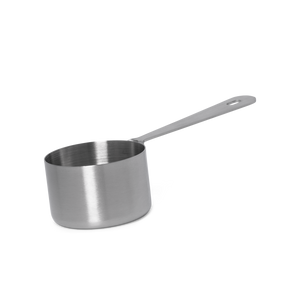The Twenny Bar is a ready-to-use meal, in the form of a bar, which provides everything your body needs. The vanilla bar contains 384kcal and the chocolate 376kcal kcal, they both provide all the needed macro- (protein, fats, carbs, and fibre) and micronutrients (vitamins and minerals).
Nutritional information
|
Nutrition (Vanilla bar) |
Value per 100g |
RDA (%) |
|
Energy |
372 kcal / 1681 kJ |
19% |
|
Fat |
14 gram |
19% |
|
From which saturated fats |
3,9 gram |
21% |
|
Carbohydrate |
44 gram |
18% |
|
From which sugar |
5,2 gram |
6% |
|
Fibre |
9 gram |
|
|
Protein |
20 gram |
41% |
|
Salt |
1,18 gram |
Ingredients
- Rolled Oats (24%)
- Humectants (Glycerol, Maltitol)
- Rapeseed Oil
- Soya Protein Crisp
- Full Cream Milk Powder
- Maltodextrin
- Soya Protein Isolate
- Whey Protein Concentrate
- Inulin
- Coconut Oil Powder
- Milk Protein
- Vitamin & Mineral Blend
- Salt
- Vanilla Bean
- Antioxidant
Macro Nutrients
Protein
Each Twenny Bar contains 20 gram of protein provided by whey protein which is one of the main ingredients of the bar. Whey is considered a complete protein, since it provides all the essential amino acids your body is unable to produce on it's own, next to that it has a very high bioavailability. [1] The amino acid profile is as followed:
|
Amino Acid |
Gram per bar |
|
Histidine |
0,49 gram |
|
Isoleucine |
0,81 gram |
|
Leucine |
1,48 gram |
|
Lysine |
1,15 gram |
|
Methionine and Cystine |
0,56 gram |
|
Phenylalanine and Tyrosine |
1,45 gram |
|
Threonine |
0,76 gram |
|
Tryptophan |
0,25 gram |
|
Valine |
0,85 gram |
Fat
Next stop: the fats, which mainly come from the added rapeseed oil. Why rapeseed oil? Well, this particular oil provides a lot of nice polyunsaturated fats (PUFAs), just a little bit of saturated fats and a great amount of omega 3 and 6, the stuff your body loves. The World Health Organization has advised getting around 20 to 35% percent of your energy from fats [2]. Low in saturated fat and high in omega, an excellent fatty acids profile. In our Twenny bar 34% of the energy comes from fats, but do not be scared of this, we add them in the right amount and optimal form!
Carbohydrate
The main ingredient in the Twenny Bar is oats, which provide most of the carbohydrates. Each Twenny Bar has 46% of the calories coming from carbohydrates. We use oats as the main source of carbs since it has a lot of slow-releasing carbohydrates which makes sure you stay satisfied for a long period of time after consuming the bar. [3] Also, the oats have a low glycemic index (GI) to sustain your energy throughout your day. [4]
Since we don’t add any table sugar to our Twenny Bars, the bar only contains 5,4 gram of naturally occuring sugars from the oats, whey, and soy.
Fiber
The content of fibers in the Twenny Bar is mainly provided by inulin and secondly by oats, both providing insoluble fibers. Fiber not only helps with satiety feelings [5] but is also very much involved in the health of your gut bacteria, you can read all about it here.
Vitamins and minerals
Next to all the macronutrients, we also looked after the little guys and did not forgot about the micronutrients in the Twenny Bar. We added all the necessary vitamins and minerals to achieve the recommended daily intakes established by the European Food Safety Authority's Regulation 1169. [6] Every Twenny Bar contains 20% of your daily needs of micronutrients. We added them because they are necessary for your daily body functions, they play an important role in your cellular functions, neurotransmission signaling, fluid balance, tissue structure, among others. [7]
Sources
- Hoffman, J. R., & Falvo, M. J. (2004). Protein–which is best?. Journal of sports science & medicine, 3(3), 118. Chicago
- The World Health Organization, & United Nations University. (2008). Fats and fatty acids in human nutrition . The World Health Organization.
- Rebello, C., O’Neil, C., & Greenway, F. (2016). Dietary fiber and satiety: the effects of oats on satiety. Nutrition Reviews, 74(2), 131-147.
- Kim, H. J., & White, P. J. (2012). In vitro digestion rate and estimated glycemic index of oat flours from typical and high β-glucan oat lines. Journal of agricultural and food chemistry, 60(20), 5237-5242.
- Clark, M. J., & Slavin, J. L. (2013). The effect of fiber on satiety and food intake: a systematic review. Journal of the American College of Nutrition, 32(3), 200-211.
- Regulation (EU) No 1169/2011 of the European Parliament and of the Council of 25 October 2011
- Shergill-Bonner, R., Micronutrients. Paediatrics and Child Health, 2017. 27(8): p. 357-362





















 Product added to cart
Product added to cart














